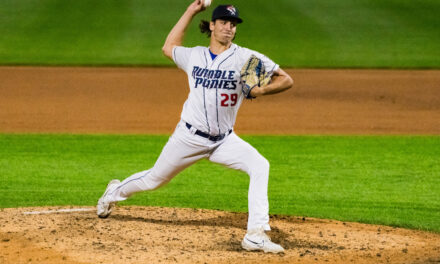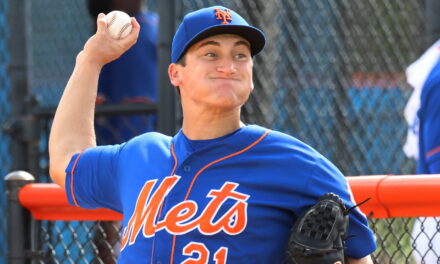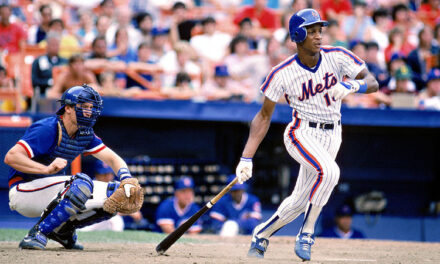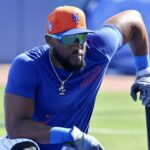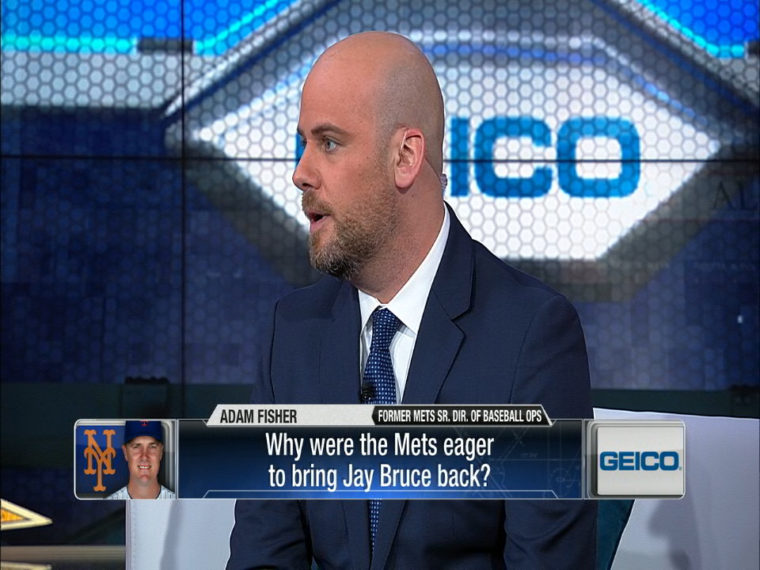
Photo Credit: SNY
For fifteen years, Adam Fisher wore many hats while working in the front office for the New York Mets.
Starting as an intern with the club in 2003, Fisher filled many roles during his tenure, which included administrative, scouting, analytics, and running the intern program.
With a blend of scouting and analytic acumen, Fisher was a valuable resource under four general managers during his time in New York. After graduating cum laude with a history degree from Harvard in 2001, Fisher cut his teeth early in scouting while working for renowned baseball writer Peter Gammons during a 2002 internship. Fisher was responsible for helping to scout the Cape Cod League for Gammons, sending reports and background information for his upcoming articles.
Following his year as an intern for the Mets in ’03, Fisher rose through the ranks to director of baseball operations from 2013-16 (given the senior director title in 2017). The role included overseeing pro and amateur scouting, working with the analytics team, and assisting assistant GM John Ricco in administrative work. This included contracts, arbitration, and providing analysis on potential transactions; which was one of Fisher’s favored assignments.
The variety of departments Fisher had worked and was proficient in led to the Atlanta Braves luring the Lexington, Massachusetts, native away from the Big Apple to work under then-GM John Coppolella as the assistant GM in September 2017.
Less than three months later, the Braves parted ways with Fisher, after the organization was rocked by a scandal involving the international player market which led to the resignation and ensuing ban for life of Coppolella. While Fisher had no part in the scandal, incoming GM Alex Anthopoulos likely wanted the opportunity to build his own staff after the upheaval.
The front office expertise Fisher has garnered could surely lead him back to a major league front office. However, after working a demanding schedule in which family priorities and personal time were often put on hold, Fisher is enjoying his newfound work running the 78th Precinct Youth Council, a youth sports organization in Brooklyn. He’s also a regular contributor on SNY, lending his analysis through the prism of a former major-league executive.
I had the pleasure of speaking with Fisher in early-January, where we discussed when he knew he wanted to work in a major league front office, his core roles and responsibilities during his tenure, and his involvement with drafting Daniel Murphy in 2006.
MMO: You grew up in Massachusetts and graduated with a history degree from Harvard. Was there a point either during your college days or prior, when you knew you wanted to work in a major league front office?
Fisher: It was something that I always considered throughout sort of my formative years. Like anybody else that loves baseball, I wanted to be a player and I did get recruited to play at Harvard. I ended up getting injured and my playing career did not go the way I wanted.
With a history degree, I wasn’t considering becoming a professor, but I thought the research, writing, and public speaking skills that I gained could be useful for a bunch of career paths. I always tell people trying to break in that you can do a lot of different things with different degrees.
What I ultimately decided when I graduated was that I wanted to work in sports. I wanted to be involved with something I enjoyed and sports was a big part of my life. The more I narrowed it down I realized that I wanted to be in baseball and work on the operations side – having seen a lot of people with a similar background to me start to break in. I guess you could say at around graduation or after graduation after thinking about different career paths.
Broadcasting, part of what I’m doing now, definitely interested me as well but at the time I wanted to be where the competition was.
MMO: What position did you play growing up?
Fisher: I was an outfielder: center field.

MMO: Your first job with the Mets was as an intern in 2003. How did you secure that internship?
Fisher: My first internship was actually working for Peter Gammons in the summer of 2002 after graduating in 2001. He had an internship program and a bunch of people in baseball went through it; a current GM and a couple of assistant GMs among them.
Peter lives on the Cape and he’s really interested in the Cape Cod Baseball League. He liked to have some assistance in the summer getting a look at the League and getting the chance to know the players. His internship was essentially scouting the Cape Cod League, writing reports, sending them to him, and helping him get background information for his articles and his thoughts about the League.
For one thing, that developed my scouting eye a little bit. I realized I had some instincts for it and gave me a little bit of confidence to pursue an internship with a team. At the time, Peter was probably the prominent sportswriter for baseball in the country and that helped of course, and I ended up with an internship with the Mets.
MMO: What were your core responsibilities during your internship with the Mets?
Fisher: All sorts of standard intern stuff. Your basic copying and sort filing, menial tasks. I essentially worked in administrative duties with every department so you get a feel for how everything works.
We also didn’t really have much of an analytics department – we didn’t have an analytics department at all – so I ended up doing a lot of analytics work. At the time, a lot of it was just data entry honestly. Things were so far from what they are now and we’re only talking about fifteen years ago.
Jim Duquette, the assistant GM at the time who hired me, had given me great advice to learn as much about analytics as possible and he used me in that regard. I remember my first assignment was taking a look at Jose Reyes and when an appropriate time to bring him up that season would be based on his development.
MMO: A name many Mets fans might not know about is Ben Baumer, who worked for the Mets from 2004-12. Can you talk a bit about his role and in particular with building the Mets’ internal database?
Fisher: Ben is really smart, just a tremendously intelligent and personable guy. He’s not a one size fits all guy; he was an English major in college actually. He ended up getting a Ph.D. in statistics and is now a statistics and data science professor at Smith.
For me, Ben was a great resource because I was learning as much about baseball statistics as I possibly could and having someone with a master’s in math sitting next to me was extremely useful. Any question I had about anything he would explain it to me in layman’s terms, so that was something that was really helpful.
Ben taught himself how to code and built version one of what’s still the Mets database; the Mets’ statistical portal. He started off building it just for advance scouting. Rick Peterson was the pitching coach at the time and he was really particular about his preparation and what types of statistics he wanted to show his pitchers. Ben started building an advance portal for Rick and then it turned into a more overall statistical database.
Over the years it’s been improved with video, more advanced tracking stuff and scouting reports. All of the things the Mets do now have been added over the years.
Ben essentially built it without having any formal training and it’s pretty impressive. And now he’s a professor at Smith.
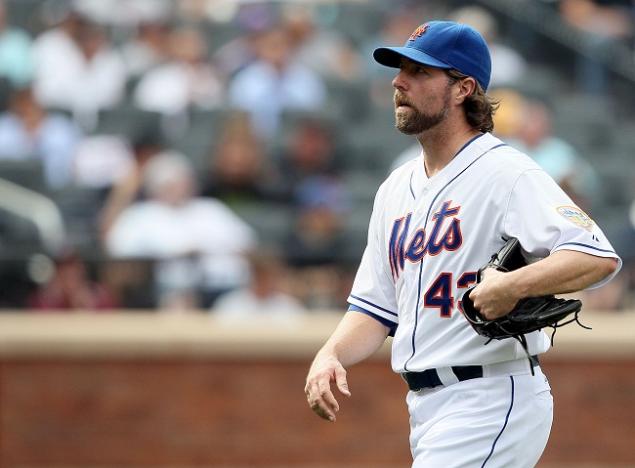
MMO: When you build reports with the aforementioned data, are you then sharing that information with both the coaches and players or just coaches who then interpret and share with their players?
Fisher: Generally you give it to the coaches and then they filter it to the players. You have the occasional player over the years, R.A. Dickey was one. Chris Young, the pitcher who is now at MLB (Vice President, On-Field Operations, Initiatives & Strategy), had his own advance scouting system and we would give him his own stuff. Jerry Blevins is a recent one.
But in general, it gets filtered through the coaches.
MMO: You worked in the analytics department with the Mets, and you’ve discussed on other podcasts how the organization had great minds but lacked in total bodies in that department. Can you talk a bit about the progression the Mets took in analytics from when you started (pre-PITCHf/x) to your final season with the club?
Fisher: I would say the majority of your advanced technologies the teams are using, the Mets are using. It’s kind of like beating a dead horse in terms of the size of their department and the whole discussion surrounding analytics with them. But certainly, they are behind the teams that are heavily invested like the Astros, Dodgers, and Brewers.
Brodie has discussed the fact that they will need to add bodies to stay competitive. At first, it was me, Ben, and our first Director of Baseball Information, Craig Marino, another really smart guy who ultimately moved to the business side. Even though Omar wasn’t considered a numbers guy, he was using us and we were kind of stealthy in that area. When Sandy first took over, he was happy with what we had going on, but of course, things changed in recent years as teams started to invest more and more.
Ben ultimately left to become a professor. Ian Levin took over the department and ran it for a couple of years and then TJ Barra. Ian was on the scouting side and working with numbers in the draft, he jumped fully to the analytics side and then went to the player development side after that. TJ had been on the minor league side but had been heavily involved with statistics and analytics during the entire time that Ben and I were there. He was a video guy when he first started with us. He jumped into Ian’s spot when he went to player development and he hired a guy named Joe Lefkowitz, who’s excellent and rebuilt the website.
A couple of years later they hired a third guy, Chris Pang [now with the Yankees]. He and Joe were tremendous with TJ. Since TJ hired some smart guys in Joe and Chris and we already had the infrastructure, they have been able to remain competitive in this area, but they have work to do to catch up to some of the teams that have invested heavily.
MMO: Fans have access to sites like FanGraphs, Baseball Savant, Brooks Baseball, and Baseball Prospectus for advanced metrics. I’m curious how much more internal data teams have compared to the public?
Fisher: Way more. It’s just drilling down into all that stuff with TrackMan, Statcast, projection models, and technologies that are exclusive to the clubs. Think like Baseball Savant but on a much broader scale.
MMO: In this data-driven era of baseball, what do you envision will be the next big frontier in terms of collecting even more information?
Fisher: I think wearable [technology] is big and I think health and fitness are really important. Of course, it’s very tricky when you’re talking about tracking software and where the team ends and the person begins. Veteran players haven’t been really excited about some of this stuff when you’re talking about measuring a player’s heart rate for example. The Zephyr harness, which measures heart rate, was approved for game use, but you don’t hear much about it and I don’t get the sense that it is being used in games much.
Think about this: you have a pitcher who has a heart rate monitor on during the game and you can get a feel for how nervous they are, how they’re handling the situation. That is extremely interesting stuff.
I think soccer, for example, is doing all that kind of stuff with every player. Now there is a difference because when you’re measuring their heart rate you’re thinking more about fitness when they’re running up and down the field, so there’s sort of a different angle to it.
For me, when you’re thinking about makeup and you’re thinking about what makes a player tick, to get a sense of, wow, this guy really looks nervous and it’s affecting his performance; how about actually truly knowing that he’s nervous? That type of thing, but also you have an injury problem and Tommy John problem, you have all sorts of things where technology can help and help teams grow.
You have labor issues in the game, but there’s also absolutely an injury epidemic and you have teams investing millions and millions of dollars, you have to think health and wellness. That’s why you saw teams have their own sleep areas in the CBA, why you saw more off days so players could rest. There’s something definitely moving in that direction.
I think health and wellness is a really important area to explore and that’s probably the next frontier. But there is also a lot of cool technology in the public sphere right now being used in player development and that seems to be another area where we are seeing a lot of growth.

MMO: Speaking of health and wellness, Mets fans have long dreaded hearing players land on the disabled list and many felt like this was increasingly happening to this club in particular over the years. Who can forget all the hatred for Ray Ramirez? What’s your take on the number of injuries players were going through during your time in the front office, and do you have a particular theory of why injuries seemed to be so prevalent?
Fisher: The club has talked about issues with internal processes and communication and I think clearly these last couple of years they’re trying to fix that up. Messaging and communicating things to the public has also been an issue at times. Obviously, it wasn’t Ray’s fault, he’s the trainer and he’s doing his best to hold it together.
I think you had two periods of heavy injury, one being the ’07 to ’09 [period] and then you had ’15 to ’18 and they’re kind of lumped together. They don’t’ totally go together but I think Sandy tried to talk about that and got frustrated about it because for the most part in his first stretch really through the World Series our health – I mean we had some high-profile Tommy John’s– but there was nothing crazy.
I think that a lot of it is a combination of who the team signed and some bad luck, but obviously, there are deeper forces at work there. Essentially, it ended up you can’t win, you know? You try to be more conservative by keeping a player on rehab and he ends up spending his entire life in Port St. Lucie. You bring a player back on the faster side of the projection and they get injured again.
Look, the Mets have among the best doctors in the country. Who are you going to point the finger at? I think you have four or five factors coming together and perhaps some different causes and effects for the two different periods that link together. The Mets have been injured more than a lot of teams but at the same time generally as New Yorkers, we look at teams in a vacuum, as you know. And you think, oh, my team’s the most injured without kind of looking at other teams and seeing that there are however many teams having similar problems.
The last two years have been brutal and I get it, the Mets have been injured more than most teams these last couple of years but I’m not sure it’s an all-encompassing fifteen-year problem.
MMO: You wore many different hats with the team, working in scouting, analytics, administrative, etc. Did you like a certain department better than others or felt like you excelled at one in particular?
Fisher: My core responsibility was helping the major league team. I worked in amateur scouting and I really enjoyed scouting amateur players, but the fun for me was trying to help evaluate major leaguers and minor leaguers and put quality teams together. As an analyst, that was always the most fun.
Over the years, I always kept at least some semblance of the analyst role which was kind of among my first roles for Omar [Minaya] when I first started looking at scouting and statistics and trying to put them together to get a full picture of a player.
I always continued to do that throughout my time with the Mets with Sandy [Alderson] being involved in many of the transactions. Obviously, the highlight of that was the World Series appearance but that for me was always the most fun. The stuff that fans think is the most fun was probably the most fun for me, too.
MMO: During your tenure with the Mets, you worked primarily under GMs Omar Minaya and Sandy Alderson. Can you contrast them a bit and talk about what you viewed as their individual strengths?
Fisher: Omar from an evaluation standpoint and from a people standpoint. They’re both great people to work for, just two tremendous people to work for.
Omar is a fun-loving guy and you enjoy going to the mat for him. Obviously, as an evaluator he’s excellent and it was always fun. It was a different take than mine, it wasn’t always a statistical-oriented take and he would always want the information and would blend it. But it was a pure scouting take and I always enjoyed talking to him about it and going through sort of his process. I definitely think his strengths as an evaluator and trying to find undervalued players whether they are in Latin America or through the draft, and just a fun people person who people enjoyed being with and working for.
With Sandy, what I enjoyed the most with him was how collaborative he was. He had a really good process and obviously, the buck stopped with him. But he listened to a lot of people and synergized a lot of different opinions, different types of information before he made a decision, and I always appreciated that. The way he would negotiate and the way that he would go about his process, I felt that I learned a lot.
Like I said, with Omar, from a pure scouting standpoint to Sandy from an organizational standpoint how he went about his transactions and how he handled things, that was for me his biggest strength. He [Sandy] was fun to work for as well, you see his sense of humor on the public scale and certainly, that was the most fun when working for him. All those wry, witty jokes you get behind the scenes.
MMO: You were the director of baseball operations from 2013-16 (earning the senior title in 2017). What were the day-to-day operations of a director of baseball operations? What were your main responsibilities?
Fisher: My core responsibilities as senior director kind of evolved over the years; I oversaw pro scouting, oversaw advance scouting, our intern program, and you alluded to analytics. Those last couple of years in addition to doing analysis my core responsibilities were helping out John Ricco, the assistant GM, with arbitration, rules, contracts, transactions, procedures; more administrative stuff.
John was a great person to learn from in this area because he is among the best in-game with rules and arbitration. Fans don’t know a whole lot about him, but they should know that.
MMO: I heard this question asked to you on a podcast you conducted with FanGraphs, but I loved it and think it’s an interesting one. Looking back, how did you balance a personal life with the often crazy structure of your work schedule?
Fisher: It’s very challenging. Every conversation that I have with a young person who wants to get in on the baseball side is you’re 23 now and you don’t really care about that stuff. You’ve got however many years to kind of be a bachelor or whatever and work all the time. But you’re talking about long days. In the offseason, it’s not as crazy but it can be. You’re not talking about crazy long days necessarily, but the travel component; maybe you’re going to the Arizona Fall League and maybe you’re going to the Dominican, or the Winter Meetings. From that standpoint, it doesn’t end. The offseason seems very short because it is short but then once you get into February you’re in Florida.
For me, having a family – I have two little kids – my older son is seven and some people will bring their families down to Florida with them and home-school them. We never did that. For seven years I’d see my family and go down on off days or take a day off and fly down and take a day trip just to see my kids. So you’re talking about almost two months where you barely see your family, and that can be the life of a scout.
It doesn’t stop as you get into the season and the team is home. I’m not complaining – I loved this – but you’re looking at a 12-plus hour day. You are working all weekends. And when the team’s on the road a lot of the time I’d be traveling with them.
You’re not home much and it’s tough to have a home life. Obviously what happened to me with the Braves is strange and an unusual situation when you look at the details, but in general it happens in sports and people get let go. When I was with the Braves I was in it and fully committed of course, and I loved the baseball side of it. But once I got out and I got a chance to reevaluate I realized that it was becoming harder and harder for me to take those trips and be away from my family. I was commuting the short time I was in Atlanta and that was challenging.
This is an opportunity for me; I’m actually running a youth sports group here in Brooklyn. It’s really gratifying and I’m not sure I’m going to go back to a team. I do miss the action I’ve got to say, but I’m getting the chance to be with my family and it’s a nice break. Whether I go back or not, I’m really enjoying having a relatively normal lifestyle.

Photo Credit: 8th Precinct Youth Council
MMO: Can you talk a little about the youth sports group you’re running in Brooklyn? What sports and activities do you offer?
Fisher: It’s called the 78th Precinct Youth Council. You can check us out at www.78pyc.org. We will have a website relaunch next month. We have more than 2,000 kids in our programs. We have baseball, basketball, and flag football and we’re out of Park Slope. I’m really enjoying it. We also have travel teams; travel baseball for eight to fourteen-year-olds [Brooklyn Bulldogs]. We have baseball and basketball camps and clinics; it’s a lot of fun.
It’s different in professional baseball because I was really more involved in the scouting and major league side: scouting, analytics, administration, those were the main three. Certainly, I had a little bit of experience in player development, but for the most part, though I wasn’t coaching or on the player development side. But here at the youth level, I’m getting the chance to go back to the start and do more youth coaching. Most people at this level want to get to coach or play in college and beyond and I am going in the other direction.
One of the really cool things coming from professional baseball is I’m introducing different types of technology into our travel program. For someone that’s not familiar, it sounds weird, but there’s so much going on in the amateur level when it comes to technology like tracking software. A lot of the stuff that major league teams are using, colleges are using or high schools or facilities are using them as well. I mentioned it earlier when talking about new technologies. Many of them are available for youth sports. For example, we’re using Blast motion; every player in our travel program is going to be getting a bat sensor and it’s pretty cool for a young player.
I felt like this was something that’s right in my neighborhood, and it’s a really good organization. There was an opportunity because they were having a change in leadership and I just thought it was time to do something different. Obviously, you see me on SNY and I do that as well, but my day job is running the youth sports organization. And look, that door’s open to go back to a team. I’m certainly not closing the door in any way. But right now I’m enjoying a different side of the game.
MMO: You do a great job on SNY with your analysis and unique perspective coming from a former long-time front office member. I think your future is very bright if you were to stay in the broadcasting field.
Fisher: Thanks, man. The broadcasting stuff has kind of evolved organically on SNY because of my relationship with the Mets. I’m not a well-known guy but I really enjoy that. We’ll see where it goes. It allows me to stay in the game on the professional side and continue to analyze the Mets and Yankees. Obviously, there’s no shortage of interesting things that are going on with those organizations.
MMO: You’re active on social media and see how the fans respond to various moves or non-moves that the Mets make. What would you say the biggest misconception(s) that fans have of a front office are?
Fisher: I guess the biggest thing is nothing happens in a vacuum. That’s my catch-all, which means there are a lot of different things going on and a lot of different factors that go into every decision and a small amount of it is made public.
Look, there are plenty of decisions where if you want to take a shot at the front office you’re totally deserved. But there are also some decisions where there are a lot of things that go into it that the public doesn’t know and the reasons may be a little more obscure.
At the end of the day, many things are not 100 percent straightforward when it comes to these types of transactions. That always frustrated me, particularly with Mets fans. I can’t blame them but they’re generally pretty negative as a group, it’s no secret. You make kind of a minor move and everyone’s freaking out and there are some obscure reasons maybe of why you made that minor move. No one knows and there’s not much you can say to address it. It might be a minor personal thing that a player did or makeup personality. Those types of things often times the public doesn’t find out about.
MMO: I’ve always been intrigued with the amount of information, rules, and guidelines members of the front office need to know for various aspects of running a club. I’m curious, for you in particular, how much of your development was learning on the job and was there a specific area that you had to adjust more to than others?
Fisher: The rules can certainly be complicated and I think it is important to double-check things even when you know the answer. That is something that John Ricco taught me. I think you want everyone in your front office to have a basic understanding of things and really there are a number of different layers where rules are involved and you have different people who are experts in different areas – you are talking about some combination of Major League, Minor League, Draft and International Scouting.
For me, it started as the day I was an intern. I think the public is better informed now over these last fifteen years versus when I first started in terms of the rules that you may or may not know. A lot of people don’t necessarily know what it means to be designated for assignment, for example. Your basic fan doesn’t know that, so let’s just start there. You learn that and then you learn the waiver rules, draft rules, and all of those things.
The biggest change for me over the last eight to ten years was the changes with the multiple CBAs. Particularly with the draft rules, international signings, how they changed the draft and concept in terms of signing slots, a lot of that stuff. All my experience was on the amateur side – I only spent one year – but also I was more involved in the immediate years following, and it was with the old rules.
That was one area where – to kind of back up your question – I really had to study up. Now having been out of it for more than a year I’ve always got to really double-check things. The truth of the matter is, the more you do it the fresher it is in your mind, it’s like anything.
MMO: With all of the prospect rankings from Baseball America, FanGraphs, MLB Pipeline, etc., how much stock do front offices put (if any) into them for evaluations and or trades?
Fisher: It’s a guideline, and every team has a feel for it. I think one of the biggest things is to understand what you may have in your own internal system and you can kind of use it to push a player up. If the player’s ranked say third on your list with FanGraphs, but you think they’re the eighth or ninth-best player in your system, a lot of times teams will use that to push that higher ranked player that they don’t believe in and hoping that the other team will be more concerned about the ranking than they are.
You’re basically trying to trick them and there are only so many teams that you can do that with. The smarter the teams get, the less you’re going to be able to do that. But in general, it’s a guideline. The industry thinks X about this player; I think you have to be convicted that if you trust those lists then maybe you should hire those guys.
The reality of it is that you have to be convicted. If you have a player that you like who’s not on any list, for me, it’s self-evident you’re going for it. You trust your scouts, you trust your analytics department, and you trust the people in your organization. Now you do know at the end of the day that you’re acquiring a player that’s not ranked and maybe you’re going to get some media heat for it, the PR side is part of it. So that’s the thing, it’s a guideline and a PR thing, and it’s a way to potentially trick some teams.
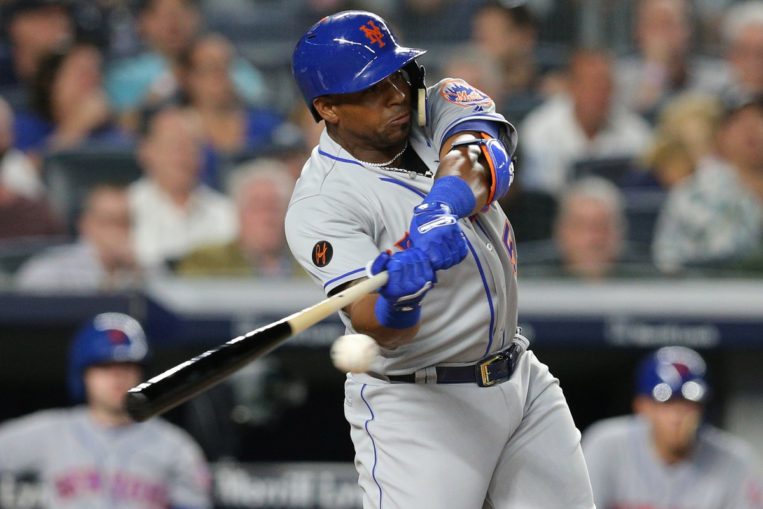
MMO: Can you talk a bit about what goes on in the front office on the non-waiver trade deadline? What’s the atmosphere like, what are some of the exchanges between front office members, and ultimately pulling off a deal?
Fisher: It really depends on how active you are. There are days where – and I’ve talked about this – where Sandy spent that entire day on the phone with Dave Dombrowski trying to keep Michael Fulmer out of the Yoenis Cespedes deal. That’s a busy day. There are other days where it’s just completely dead and you’ve got nothing going on or you’ve already finished all your trades and there’s not a whole lot going on.
For the most part, you’ve got your group of people, a small inner circle like three or four people for Sandy or as many as ten or twelve in the room just kind of kicking around ideas and discussing concepts. You’ve got your GM and assistant GM making calls to teams, updating the group on what’s going on, and that’s it. It’s not really a fire drill unless you’ve got six or seven things going on at the same time.
I guess the bottom line is there are times when it can be as crazy and as exciting as the public may think it is.The reality of it is that a lot of times it’s just your normal day and you’re just kind of waiting for teams and it can be tedious. It really just depends on how active you are, it’s a year-to-year thing.
MMO: And I suppose sometimes things can take you by surprise somewhat? I remember you talking on another podcast about how you had to turn around from the subway as you were heading home because the club was about to deal for Tyler Clippard in 2015.
Fisher: Oh yes, the Clippard deal. In that particular trade – which was about a week before the deadline – we had a pretty good idea that we were targeting Clippard. And we kicked around some names and Sandy was talking to Billy Beane. The trade or something getting serious can happen at any moment. But for the most part, it doesn’t come out of nowhere.
You know what actually kind of came out of nowhere? The Neil Walker trade with the Pirates. That trade was completed really quickly; both sides kind of were motivated to make a deal. They were interested in [Jon] Niese, we were interested in Walker and very quickly done.
We had heard rumors they were moving him the day before – it was during the Winter Meetings – and we were very interested in him, he was on our list. But there hadn’t been a lot of discussion about it yet and legitimately the deal was done in an hour.

MMO: I know you played a role in drafting Daniel Murphy back in 2006 when you were the coordinator of amateur scouting. What were your initial thoughts of Murphy and what drew you to him?
Fisher: Steve Barningham, who’s now an international cross checker with the Mets, Murphy was just his guy. Murphy was his favorite player in that draft and he kind of, not convinced me, but ultimately we agreed. He became my favorite player as well.
He sent me a video of Murphy and he looked like at the time a Don Mattingly/Wade Boggs-type. That’s what he was for me and obviously, those are huge names but you’re going to be dreaming when it comes to prospects.
I really liked his swing. And when you looked at his numbers he wasn’t playing in a great conference but his numbers were absurd. He was ASUN Player of the Year, he had way more walks than strikeouts, and you’ve got a scout saying this is my guy and my gut feel guy.
He wasn’t a great defender and he had a knee injury so it was kind of a double-edged sword. There weren’t a lot of teams on him, he was kind of hidden. He’s at a mid-major and he wasn’t on that many lists so there weren’t that many teams on him.
Part of being an area scout, which Steve was at the time in northern Florida, was knowing your competition and who’s on a guy and when you can actually draft a guy. Our two cents was he was probably going to be picked between the sixth and tenth rounds, and the knee injury pushed him back a little bit. We had some guys who were higher in the pecking order in terms of players we wanted to take and I think we were fortunate that he was there in the thirteenth round.
Now here’s the thing: when I say that he turned out exactly what I thought he was going to be, what I exactly thought he was going to be is the Daniel Murphy of before the explosion. The type of guy that he showed us before he became one of the best hitters, that was always the type of guy I thought he was going to be. And for a thirteenth rounder that’s an outstanding pick!
But what he turned into and helping us get to the World Series, that was a whole different level. It talks to how cerebral he is as a player and how he was able to sort of reinvent himself. What I envisioned when we drafted Daniel Murphy was what he was, a poor man’s Wade Boggs/Don Mattingly. Obviously, he wasn’t that type of guy until he got to the next level.
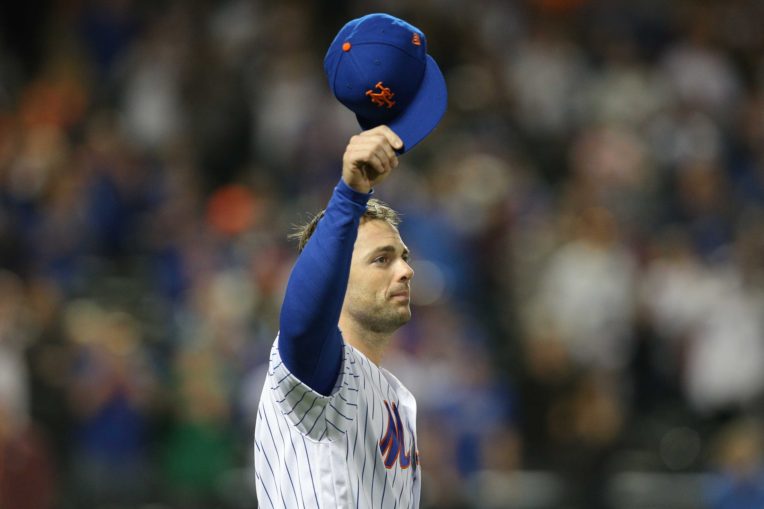
MMO: You essentially worked in the Mets’ front office for close to the entirety of David Wright’s career. What stands out most for you about the Captain?
Fisher: I was friendly with David having spent all that time with the Mets but what I would just reiterate is what you see is what you get. The player that the fans like and respect so much that’s real, that’s what David’s like. He’s just a personable guy. He’s fun, he likes to joke around, people really like him, and he’s a stand-up guy. He’s just a tremendous person.
MMO: There was a report in a FanGraphs article stating that the Mets don’t scout below full-season ball, something that many other teams do. Can you comment on that?
Fisher: I think in this particular trade’s case I think people are misunderstanding. Of course the Mets scout their own players below that level and should know their own system. I think how they deploy their scouts as a group when scouting other organizations it is accurate to say that they don’t scout below Low-A, and you can argue that it’s a time management thing. But you can also argue the positives and negatives of that philosophy.
The other thing is, all this information we have now with the Statcast and TrackMan data, you have a pretty good idea based on statistics and who’s hitting the ball hard, who’s hitting the ball in a certain way, what pitchers’ spin rates are, etc., you have a lot more information on those low levels than you used to.
MMO: Does Statcast and TrackMan data trickle down throughout the entire minor league system?
Fisher: Statcast, no. But pretty much every team has TrackMan, and the Mets have TrackMan in the Dominican Summer League. So you’re not scouting it but you have a lot of information on those players.
MMO: When you look back over your fifteen years in the Mets’ front office, is there a moment or two that sticks out for you as most gratifying?
Fisher: Daniel Murphy’s first major league hit was pretty gratifying for me. Taking him in the thirteenth-round and going the route we discussed and kind of being really aggressive about it. Steve Barningham and I were aggressive in trying to get him drafted and when he got to the big leagues so quickly, that was pretty gratifying for me.
And of course, the World Series. Obviously, we had our ups and downs; I lived through the collapses just like the fans. Those were really challenging years. You always want to finish it and it’s so hard to get to the World Series. So many things have to go right, no matter how good you are as a team, and it was disappointing to not finish the deal. But that was a lot of fun with a homegrown young pitching staff and the fact that a player I had been involved in drafting was our best player was sort of the icing on the cake for me.
MMO: I think fans often neglect to recognize that along with the players and coaches, the front office is fully invested in building a contending team, and takes just as much enjoyment in the club’s overall success.
Fisher: Beating the Dodgers with Familia on the mound and striking out Howie Kendrick was crazy. Then watching Jeurys Famila strike out Dexter Fowler was extremely, extremely gratifying. The Cubs series (NLCS) was a sweep, that game (Game 5, NLDS) was pins and needles the whole time.
MMO: And where did you sit for those games? Were you in a suite or in the stands somewhere?
Fisher: I was sitting behind home plate for the playoff run. I was watching the other team during that stretch and trying to pick additional things up.
MMO: Thanks very much for the time today, Adam. It was great to lift the curtain a bit and see what the day-to-day operations of a front office executive are. I really appreciate your time.
Fisher: You got it, Mat. Thanks for the time.
Follow Adam Fisher on Twitter, @adamgfisher


